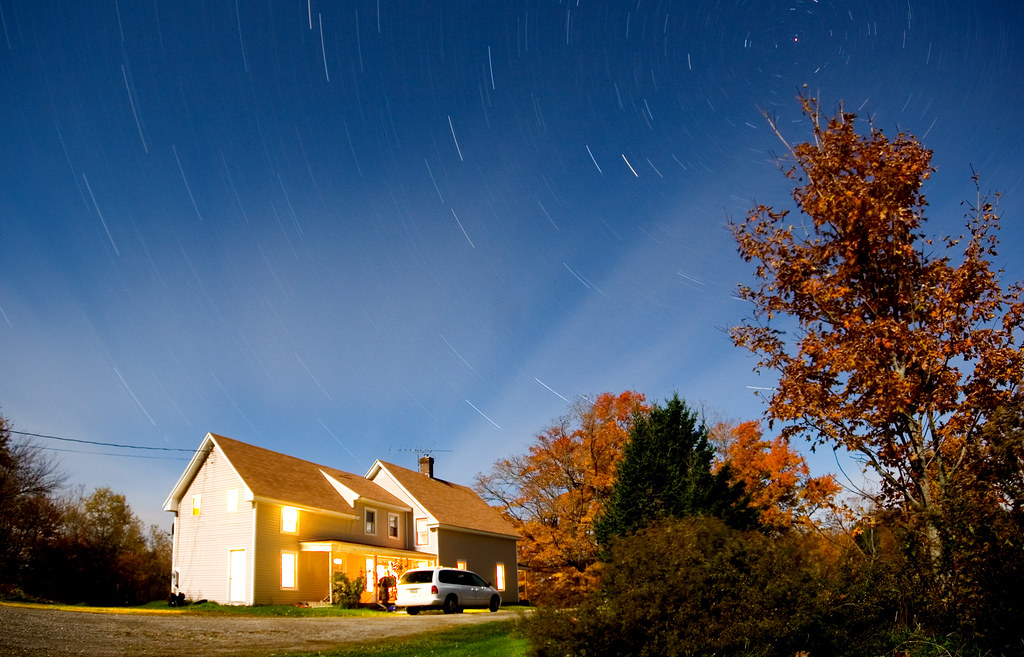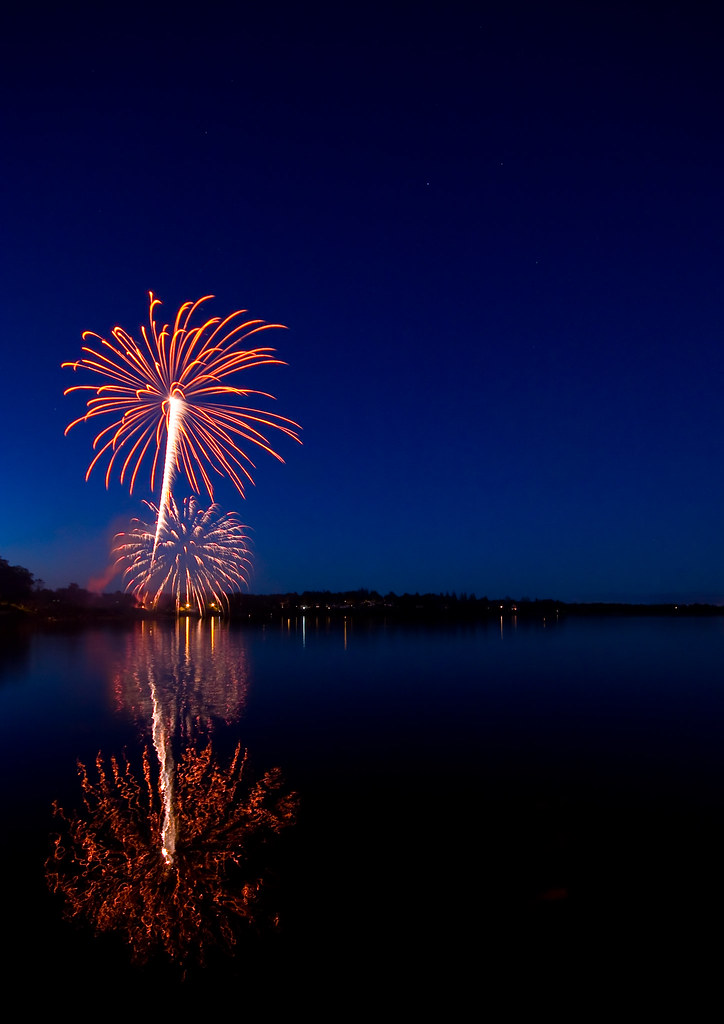 |
| Canon 20D f/7.1 2002 sec (33.36 minutes) ISO 400 |
Remember when you were a kid and your parents dragged you along on some really long road trip? And do you recall that sitting in the back seat for all that time would almost always result in one of your siblings getting car sick and ralphing all over your coloring books? Yuck!
Sad to say, that car sick sibling would have been me, except I was quick on the draw and somehow my parents always managed to pull the car over just before I....well, you know the rest.
One of the things my Dad would tell me was to lay down on the back seat and close my eyes and that I should feel better. Sure enough, Dad was right...laying down in the back seat of my parents Buick somehow always brought much needed relief from the car sickness. I don't know if it was the gentle rumble of the road noise, or if it was just the power of suggestion, but laying down and closing my eyes always helped to keep my lunch where it belonged and my brothers coloring books clean.
It was during these long road trips that I also discovered something else; if I wasn't looking out the window at the passing scenery, I found it impossible to judge how fast the vehicle was moving. As far as I was concerned, we could have been sitting idle in at a red light. Since everything inside the car was going the same speed, like the seats (thank God!) my kid brother and sister, my parents...everything.....it made the notion of movement almost impossible to detect, that is, of course until I sat up and looked outside the window. Oh...don't do that! Lay back down!!!!
*whew!* close one!
Today we take for granted our interstate highways and byways. We hop in car, crank it over and off we go. Need gas? No problem, there's a Texaco and hot coffee at every exit.
So just what in the world does all of this have to do with my picture post today?
Consider this...
Just like that kid in the back seat who could not judge the speed of the car when his eyes were closed, so it is with the humans today living on Earth. Without so much as a hint of speed, we wake up, start and end our days without every stopping to think that we are all moving very quickly as Earth rotates and travels through space.
At the equator, the Earth is spinning 1,675 km/hr, and you along with it! But do you feel anything? No of course not. And yet space agencies take advantage of this fact by launching rockets into space as close to the equator as possible so that when the rocket lifts off the ground, it's already in effect traveling that fast...which helps it along as it speeds up to the needed 28,000 km/hr needed to reach orbital velocity. Pretty fast eh?
Just like that kid looking out the window of his parents car and watching the world go by, a camera can, in effect, stare at the stars above and actually watch them go by. Because a camera is stationary -mounted on a sturdy heavy duty tripod- which is in turn 'mounted' to the Earth...each pin point of light is dragged across the cameras film plane, leaving a streak. Given enough time, a stationary camera with an open shutter can capture the movement of light traveling past it. Depending on the speed and distance of the object, you either need a great deal of time to capture that movement, or you need very little. In this example, the stars are very far away so they appear tiny. However the Earth is rotating (in the Western Hemisphere) from right to left at 1,675 km/hr. Despite such fast speeds, it still takes a long time to convey motion simply because of our distance from the stars we are photographing.
To contrast this, consider fireworks. They explode quickly and loudly. Want to take a picture of them? You will drag the shutter here too, expect the subject is much closer and much faster. A 30 minute minute exposure would be useless, so instead we aim for somewhere around 7 seconds. Yes...seconds. Hopefully you'll be a fireworks show that fires off plenty of rockets, this will give you time to experiment with your cameras settings. First and foremost, get yourself a sturdy tripod. And secondly, mosquito repellent!
For this picture at the top, I aimed my camera roughly in the direction of the North Star and left the shutter open in my Canon 20D for 30 minutes which I went inside to watch TV. The time the shutter was open allowed the streaking of the stars across the camera's film plane, forming semi-circles as the Earth rotated 'below' the North Star. Our eyes and our brains do the rest by filling in the missing data and giving us the sense that they are moving overhead when in fact it is us that did the moving.
You following all of this?
Now it's your turn! Make sure your batteries are fully charged, then grab your tripod and camera and find yourself a nice clear view of the night sky. I highly recommend bringing something to entertain yourself if you plan on making long exposures (I just went inside and watched Star Trek). I'd love to see your work, so please feel free to contact me!
Now go take some pictures!
Kevin Kratka


No comments:
Post a Comment